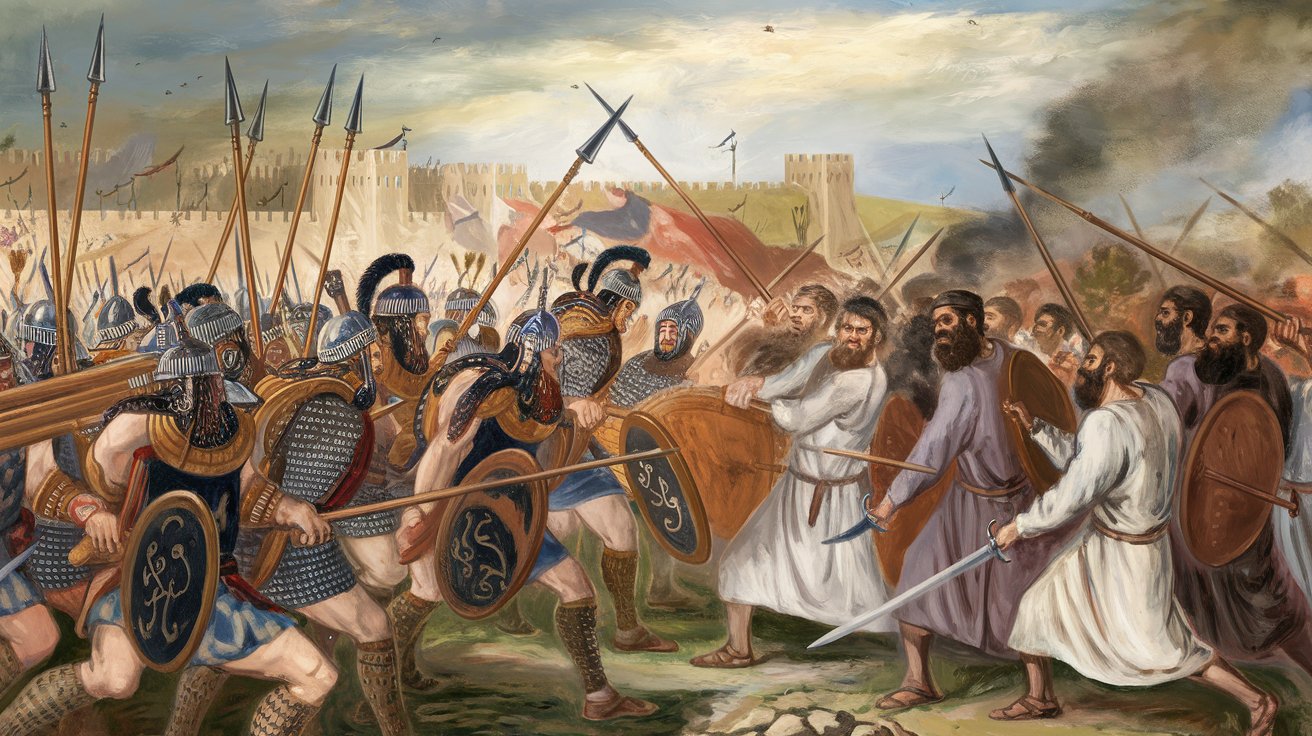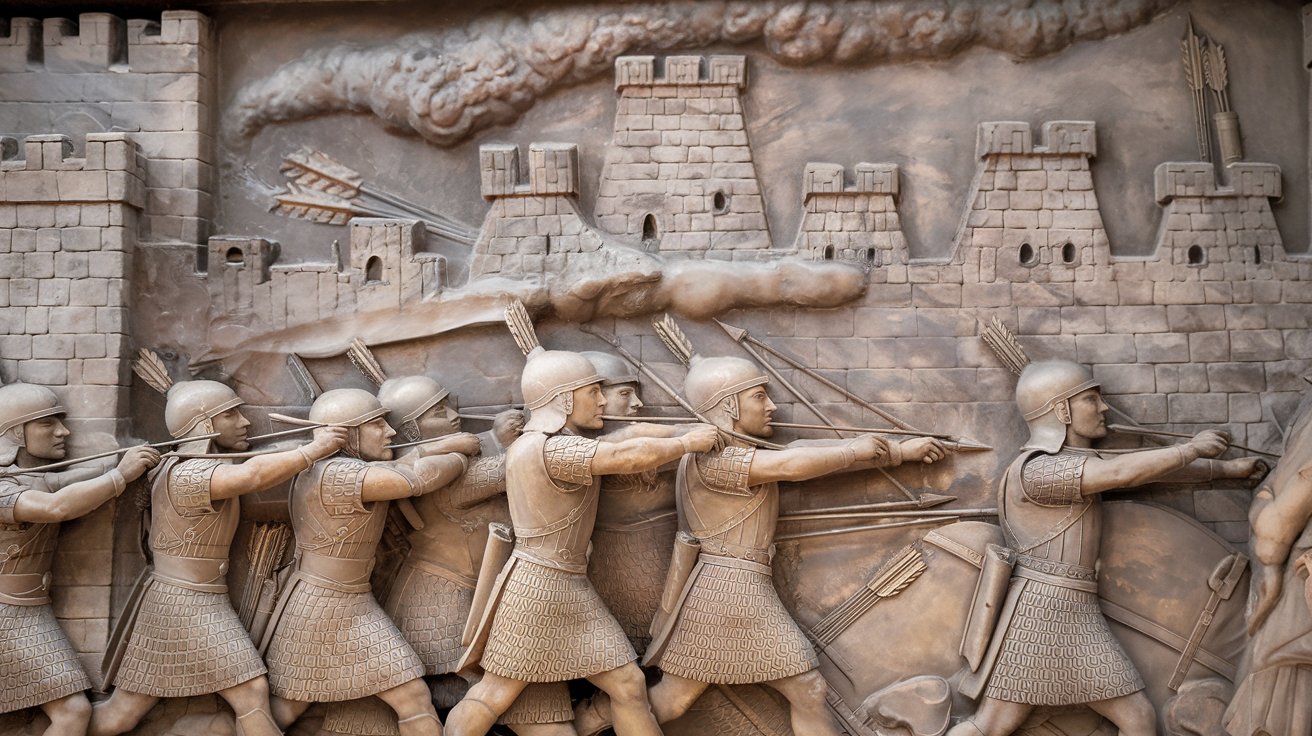
Sennacherib, one of Assyria's most famous kings, led a significant campaign in Judah around 701 BC. This event is well-documented in both historical and biblical records, offering a fascinating glimpse into ancient warfare and politics. Why did Sennacherib's campaign in Judah matter so much? It showcased the might of the Assyrian empire, highlighted the resilience of Judah under King Hezekiah, and left a lasting impact on the region's history. From the siege of Jerusalem to the alliances formed against Assyria, Sennacherib's actions had far-reaching consequences. This article explores 25 key facts about this pivotal campaign, shedding light on its historical and cultural significance.
Key Takeaways:
- Sennacherib, a powerful Assyrian king, waged a campaign to control rebellious kingdoms, including Judah. He faced resistance from King Hezekiah and other regional rulers, leading to a dramatic siege of Jerusalem.
- Despite Sennacherib's military might, the biblical account suggests divine intervention played a role in the failure to capture Jerusalem. Excavations have provided tangible evidence of the scale of the siege, shedding light on this ancient historical event.
Sennacherib's Reign and Background
Sennacherib, one of Assyria's most famous kings, ruled from 705 to 681 BC. His reign is noted for military campaigns and administrative reforms that shaped the ancient Near East.
- Sennacherib ruled Assyria from 705 to 681 BC, a period marked by significant military campaigns and administrative reforms.
- His reign was characterized by battles aimed at expanding Assyrian control over the Levant and beyond.
The Babylonian War
Before turning his attention to Judah, Sennacherib had to deal with significant challenges in Babylon. His victories there set the stage for his later campaigns.
- Sennacherib subdued the Yasubigallians and the Kassites, two powerful groups in the Zagros Mountains.
- He quelled rebellions in Babylon and installed native rulers to maintain control.
Hezekiah's Rebellion
King Hezekiah of Judah decided to stop paying tribute to Assyria, a bold move that led to conflict.
- Hezekiah stopped paying tribute to the Assyrians in 705 BC, inspired by anti-Assyrian rebellions across the empire.
- Hezekiah pursued an aggressive foreign policy, conspiring with Egypt and Sidqia of Ashkelon against Assyria.
Alliances Against Assyria
Hezekiah wasn't alone in his defiance. He formed alliances with other regional powers to strengthen his position against Assyria.
- Hezekiah formed alliances with Egypt, then under Kushite rule, and Sidqia, an anti-Assyrian king of Ashkelon.
- Marduk-apla-iddina, Sennacherib's arch-enemy, encouraged anti-Assyrian sentiment among western vassals, hoping to create a vast alliance.
Sennacherib's Campaign in the Levant
In 701 BC, Sennacherib launched a campaign to reassert control over rebellious kingdoms, including Judah.
- Sennacherib's third campaign in 701 BC targeted kingdoms and city-states in the Levant.
- The primary goal was to re-subjugate rebellious kingdoms, including Judah, which had stopped paying tribute.
Conquest of Philistine Cities
Before reaching Jerusalem, Sennacherib's army had to deal with other rebellious cities.
- Sennacherib's army defeated the rebels of Ekron in Philistia before setting out to conquer Judah.
- Luli, the king of Tyre and Sidon, rallied former Assyrian vassal cities but ultimately fled rather than face Sennacherib's army.
Ethbaal as King of Sidon
Sennacherib's strategy included installing loyal rulers in conquered territories.
- Sennacherib proclaimed Ethbaal as the new king of Sidon to consolidate control over the region.
- Many surrounding cities submitted to Sennacherib's rule to avoid retribution.
Submission of Levantine Rulers
Fear of the Assyrian army led many regional rulers to submit without a fight.
- Levantine rulers like Budu-ilu of Ammon, Kamusu-nadbi of Moab, Mitinti of Ashdod, and Aya-ramu of Edom quickly submitted to Sennacherib.
- This submission was likely due to the fear of facing the massive Assyrian army.
Siege of Jerusalem
Sennacherib's account of the siege of Jerusalem paints a vivid picture of the city's plight.
- Sennacherib described Hezekiah as being shut up in Jerusalem "like a caged bird."
- The blockade of Jerusalem was not a full siege due to the lack of massive military activities and appropriate equipment.
Assyrian Envoys and Hezekiah
The Assyrians tried to intimidate Jerusalem into surrendering through psychological warfare.
- A senior Assyrian official, Rabshakeh, demanded Jerusalem's surrender, threatening dire consequences.
- Reliefs depict Sennacherib seated on a throne in Lachish, not overseeing an assault on Jerusalem.
Biblical Account of the Siege
The Bible offers a different perspective on the siege, highlighting divine intervention.
- The biblical account suggests Sennacherib's attention was diverted to Libnah, contributing to his failure to capture Jerusalem.
- King Hezekiah and the prophet Isaiah prayed to God, leading to the destruction of the Assyrian army.
Archaeological Evidence
Excavations have provided tangible proof of Sennacherib’s campaign.
- Excavations at Lachish unearthed part of the Assyrian siege ramp, demonstrating the scale of the siege.
- The ramp's dimensions suggest that 13,000-19,000 tons of material were required to construct it.
Sennacherib's Annals
Sennacherib's own records detail his campaign against Judah.
- Sennacherib claimed to have taken 46 of Hezekiah's strong cities, bringing away 200,150 people and numerous animals as spoils.
Sennacherib's Legacy in Judah
Sennacherib's campaign in Judah was a defining moment in ancient history. His military prowess and strategic acumen left an indelible mark on the region. Despite his failure to capture Jerusalem, his conquests of other cities like Lachish showcased the might of the Assyrian empire. The detailed records in Sennacherib's annals and the vivid Lachish reliefs provide a fascinating glimpse into this turbulent period. Hezekiah's rebellion, the alliances against Assyria, and the eventual tribute payment highlight the complex interplay of power and politics. Archaeological finds, such as the siege ramp at Lachish, corroborate these historical accounts, blending biblical narratives with tangible evidence. Sennacherib's legacy, marked by both triumphs and setbacks, continues to captivate historians and enthusiasts alike, offering valuable insights into the ancient Near East's intricate tapestry.
Frequently Asked Questions
Was this page helpful?
Our commitment to delivering trustworthy and engaging content is at the heart of what we do. Each fact on our site is contributed by real users like you, bringing a wealth of diverse insights and information. To ensure the highest standards of accuracy and reliability, our dedicated editors meticulously review each submission. This process guarantees that the facts we share are not only fascinating but also credible. Trust in our commitment to quality and authenticity as you explore and learn with us.


